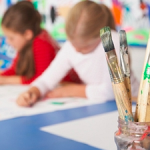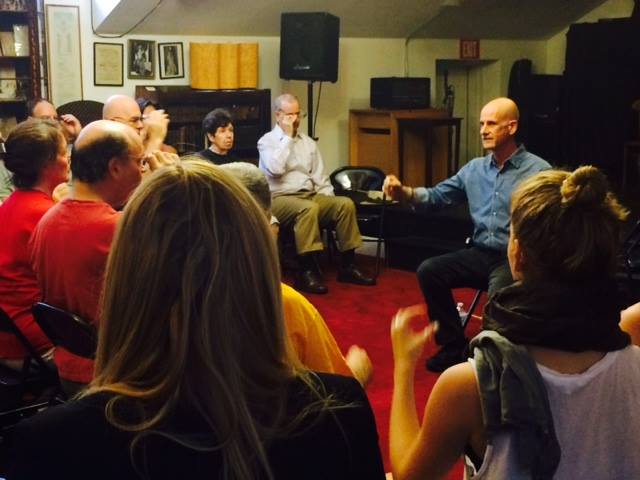 The Alexander Technique worked great for kids in an after-school art class today.
The Alexander Technique worked great for kids in an after-school art class today.
The teacher gave his students an assignment. They were to draw him, in a full-length portrait. He gave them ten minutes, and then collected their work and put it aside.
I was at the side of the room, just watching. I saw a combination of intensity, end-gaining, concentration, over-focusing, tightening, ease, gripping, lightness, compression, and freedom.
When their time for drawing was up, I had ten minutes to teach the class the Alexander Technique. I left nothing out.
They have ideas about primary control, inhibition, and oppositions. They applied the idea of leading with their fingertips to initiate movement (with the pencil as an extension of their fingertips while freeing their neck.
We ended with the whispered ahh.
Then they drew another portrait.
The teacher took before and after photos of their work, documenting it for a thesis entitled: “The Alexander Technique in the Classroom.”
How can the Alexander Technique benefit the classroom?
1. Enhanced self-esteem that improved postural habits afford, due to the mind/body connection.
2. Back pain and neck pain avoidance later in life, (like when they’re sixteen.)
3. Life-long tools to decrease tension, increase breathing, decrease stress, increase creativity, increase development of a wider, more open view.
4. The ability to study longer, with less discomfort, through school years and beyond.
5. The ability to easefully use the computer, tablet, cell phone, and to adapt to whatever comes next.
I never got to see the two versions of the portraits, and I’m curious about the difference.
Mark Josefsberg-Alexander Technique NYC










Very interesting. Maybe you can write a follow up when you see the before and after portraits. How old were these kids?
Thanks Priscilla,
These kids were between seven and ten years old, and of course they never heard of the Alexander Technique. I will try to follow-up. I may also get a chance to do the class again. they were really receptive.
Nice blog Mark,
I am planning to introduce the Alexander technique at a primary school close by me. Any tips how to explain AT in 10 minutes to kids and not leave anything out? I am amazed!
All best, thanks,
Maaike
Hi Maaike,
Please don’t be amazed! It was my attempt at a joke. The joke is that it would be very difficult to explain the ENTIRE Alexander Technique in ten minutes. Ot ten days for that matter. My only tip would be not to spend one minute on any Alexander Technique jargon. Find other ways to label and explain things that they will understand.
Also, keep it simple. and have fun!